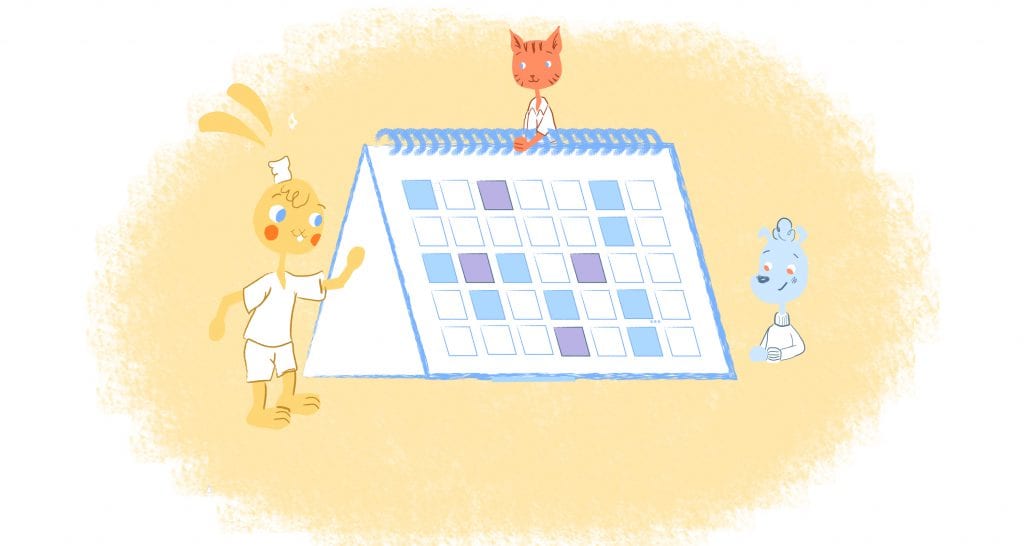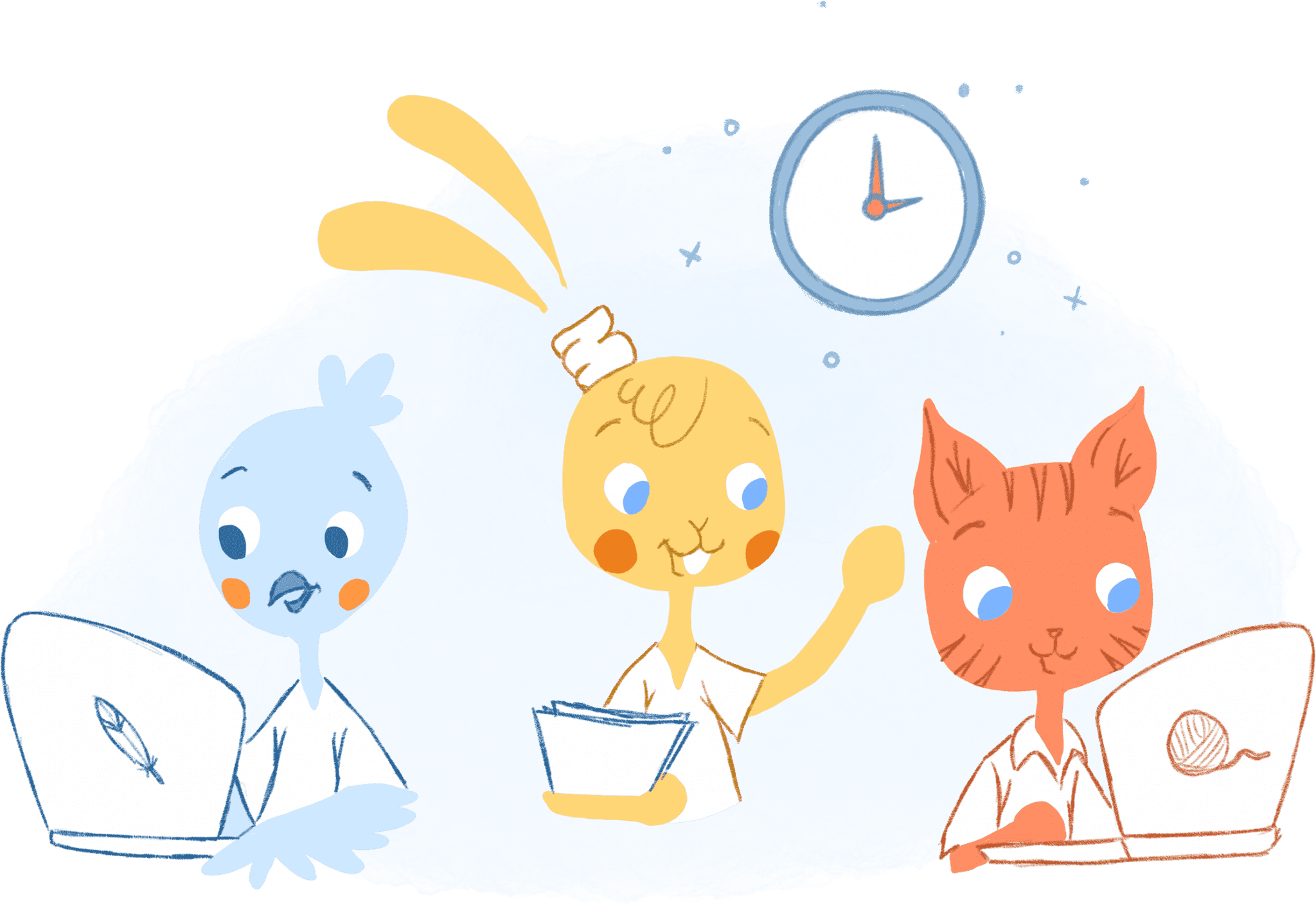

Like it or not, we all need a daily routine. It keeps us in check. It also ensures that we get stuff done and maintain a healthy work-life balance. The problem? To create the best routine requires knowing a lot about each person out there. The routine that works best for me may not work for you. At the same time, by creating a routine with an online calendar, you can ensure that each day is productive and successful.
How to Create a Routine with an Online Calendar
Create a morning ritual.
Every successful individual has a morning routine. In fact, research from time management expert and author Laura Vanderkam found that 90% of executives stated that they wake up before 6 a.m. on weekdays. For me, I get-up at 5:15 a.m. sharp Monday through Friday.
But, it’s not just waking up before everyone else. Successful people use this time to exercise, meditate, read, write, work on a passion project, make their beds, plan their days, and spend quality time with their families.
But, as Tim Ferriss suggests;
“I try to have the first 80 to 90 minutes of my day vary as little as possible. I think that a routine is necessary to feel in control and non-reactive, which reduces anxiety. It therefore also makes you more productive.”
In my routine with an online calendar, for instance, my morning ritual looks something like this:
- 5:15 – Wake-up
- 5:30 – Exercise
- 6:00 – Shower and get dressed
- 6:30 – Write and reflect
- 7:00 – Respond to emails and set goals for the day
By 7:30 a.m. I’ve already had a productive morning. I also feel relaxed, prepared, and ready to start the rest of my day.
Use your “magic hours” to get your most important stuff done.
After your morning ritual, it’s time to get down to brass tacks.
I know what you’re thinking. You have your entire day to cross off your to-do-lists. Why rush in getting it done so early?
Research shows that 2.5 to four hours after waking is when your brain is sharpest.
Dan Ariely, behavioral economist at Duke University, says:
“It turns out that most people are productive in the first two hours of the morning. Not immediately after waking, but if you get up at 7 you’ll be most productive from around from 8–10:30. One of the saddest mistakes in time management is the propensity of people to spend the two most productive hours of their day on things that don’t require high cognitive capacity (like social media).”
This means that you should block out your morning hours for your three most important priorities or goals. Again, if your “magic hours” are between 8 – 10:30, then this time should be spent solely for work. No exceptions and no distractions allowed.
Regroup and carry-on.
It’s not uncommon for us to have the dreaded afternoon brain fog. This is often due to our natural circadian rhythm. Instead of fighting against it, use this time to regroup.
Grab something to or take a power nap. It’s been found that around 2 p.m. and 3 p.m. are the perfect times for a power nap.
You should also plan for this time to review your goals. Knowing how far you’ve progressed is one of the best ways to remain motivated for the remainder of the day.
Now that you feel more energized, it’s time to get back to work. For, I usually catch a second-wind from around 2 – 4 in the afternoon. Knowing this, I try to block out time for the tasks I didn’t finish in the morning.
Plan for meetings, calls, and distractions in late afternoon.
When your energy is high, that’s when you should work on more challenging or creative tasks. When your energy is low, it’s time to focus on busy work. This could be anything from running a meeting, returning phone calls or emails, or organizing your workplace.
In fact, research has found that the best time for meetings are in the afternoon meetings, 3 p.m. to be exact.
This is also the ideal time to cross-off those dull tasks you’ve been dreading. But if you really want to get these tasks done, then make sure you have a partner in crime.
Just having friends nearby can push you toward productivity. “There’s a concept in ADHD treatment called the ‘body double,'” says David Nowell, Ph.D., a clinical neuropsychologist from Worcester, Massachusetts. “Distractible people get more done when there is someone else there, even if he isn’t coaching or assisting them.” If you’re facing a task that is dull or difficult, such as cleaning out your closets or pulling together your receipts for tax time, get a friend to be your body double. [Friendfluence: The Surprising Ways Friends Make Us Who We Are]
Simply put, use your late afternoon hours to schedule meetings, phone calls, and soft tasks like emails and cleaning. It’s also the perfect time to plan for distractions since it can give you a little boost.
Chillax in the evening.
After a long day at work, it’s best to take the night off and recharge. Have dinner with your family. Plan for the next day and do something you find relaxing.
According to the American Psychological Association, “the most effective stress-relief strategies are exercising or playing sports, praying or attending a religious service, reading, listening to music, spending time with friends or family, getting a massage, going outside for a walk, meditating or doing yoga, and spending time with a creative hobby.”
The least effective strategies, however “are gambling, shopping, smoking, drinking, eating, playing video games, surfing the Internet, and watching TV or movies for more than two hours.”
Once you’ve had time to decompress, it’s time for bed. This means getting 6 – 8 hours of quality sleep. Doing so keeps you emotionally, mentally, and physically healthy.
How do you create a routine with an online calendar that works best for you? Tag us on social!











John Rampton
John’s goal in life is to make people’s lives much more productive. Upping productivity allows us to spend more time doing the things we enjoy most. John was recently recognized by Entrepreneur Magazine as being one of the top marketers in the World. John is co-founder and CEO of Calendar.